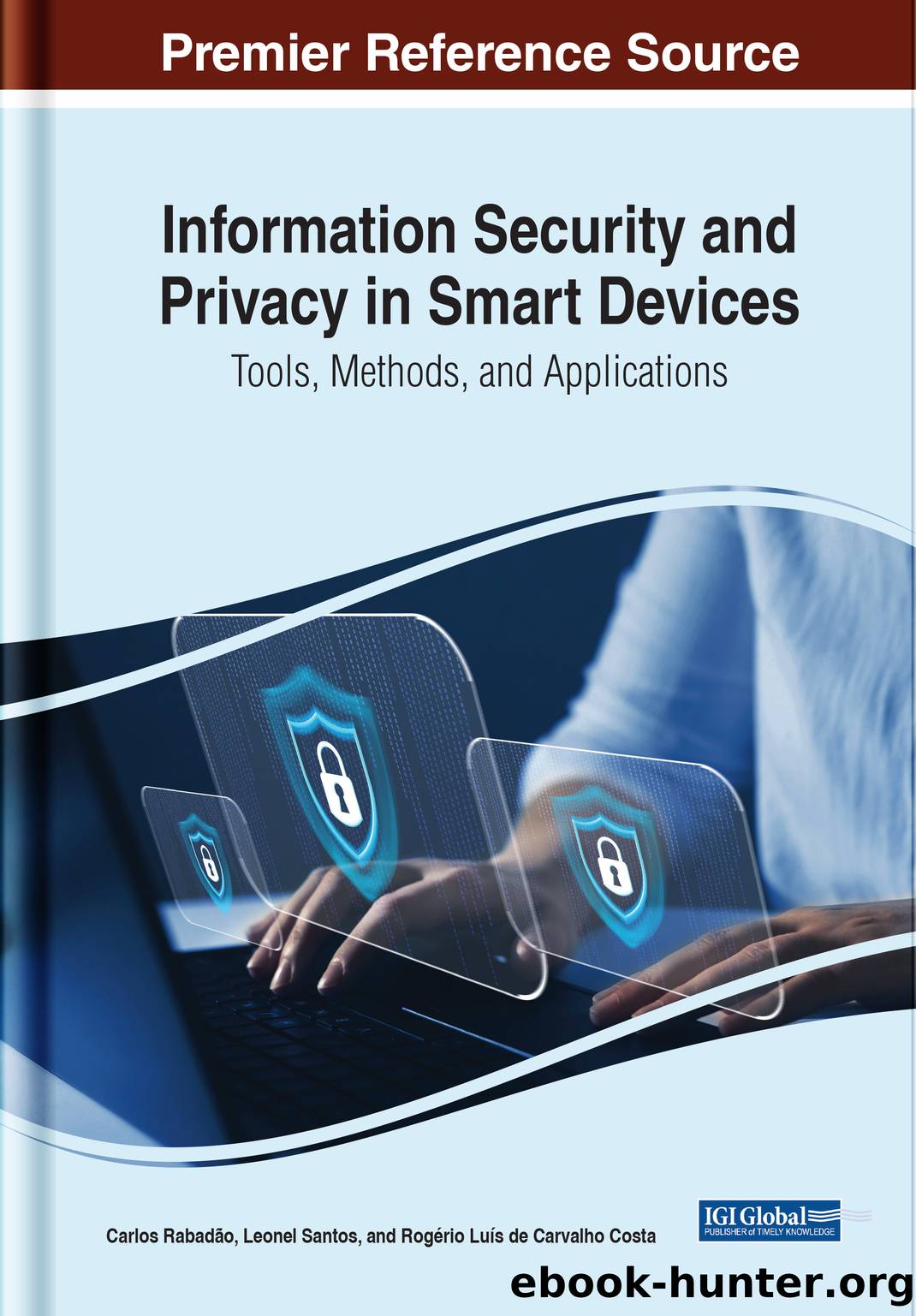Information Security and Privacy in Smart Devices: Tools, Methods, and Applications by Rabadão Carlos

Author:Rabadão Carlos
Language: eng
Format: epub
Publisher: Information Science Reference
Anonymization algorithms are applied on the QID values to prevent the intruder from causing privacy threat. Therefore, the privacy goal of any anonymization algorithms is to prevent the privacy threats.
Utility Goal
With data anonymization there is difference between the original data and the anonymized data, this is called as information loss. To prevent privacy threats, the data is anonymized and there is an information loss, but it should be minimal to have greater utility of the published data. There must be balance between the privacy preservation and information loss (Martin et al., 2007).
In this paper the privacy and utility goals of fifteen algorithms is discussed.
Definitions
Let T be the original microdata table, in the published microdata the identifiers are removed and anonymization methods are applied on Quasi-Identifierâs. The resulting table is of the form: T` (QIDâs, SAâs).
· Definition 1: Equivalence Class (EQ)- An EQ is a set of anonymized records that have same QID attribute values. The records in an EQ are all identical with respect to their QID values.
· Definition 2: k-anonymity (Ciriani et al., n.d.)- A table satisfies k-anonymity if the records in an EQ are indistinguishable from other (k-1) records with reference to QID attributes.
· Definition 3: l-diversity (Machanavajjhala et al., 2007; Xiao et al., 2010; Kifer & Gehrke, 2006a)- An EQ is said to satisfy l-diversity if there are at least l âwell representedâ values for SAâs.
· Definition 4: t-closeness (Li, 2007)- A EQ is said to satisfy t-closeness if the distance between the distribution of a SA within any EQ and the distribution of the same attribute in the entire table is not more than the predefined threshold âtâ.
· Definition 5: Privacy Threat (Sowmyarani and Dayananda, n.d.)- A threat that is caused by an intruder after gaining access to the published data and is able to link the record of the respondent with his sensitive attribute. The threat may be in physical or informational.
Download
This site does not store any files on its server. We only index and link to content provided by other sites. Please contact the content providers to delete copyright contents if any and email us, we'll remove relevant links or contents immediately.
| Automotive | Engineering |
| Transportation |
Whiskies Galore by Ian Buxton(41712)
Introduction to Aircraft Design (Cambridge Aerospace Series) by John P. Fielding(33011)
Small Unmanned Fixed-wing Aircraft Design by Andrew J. Keane Andras Sobester James P. Scanlan & András Sóbester & James P. Scanlan(32678)
Craft Beer for the Homebrewer by Michael Agnew(18076)
Turbulence by E. J. Noyes(7888)
The Complete Stick Figure Physics Tutorials by Allen Sarah(7258)
Kaplan MCAT General Chemistry Review by Kaplan(6813)
The Thirst by Nesbo Jo(6748)
Bad Blood by John Carreyrou(6468)
Modelling of Convective Heat and Mass Transfer in Rotating Flows by Igor V. Shevchuk(6349)
Learning SQL by Alan Beaulieu(6152)
Weapons of Math Destruction by Cathy O'Neil(6076)
Man-made Catastrophes and Risk Information Concealment by Dmitry Chernov & Didier Sornette(5870)
Digital Minimalism by Cal Newport;(5576)
Life 3.0: Being Human in the Age of Artificial Intelligence by Tegmark Max(5396)
iGen by Jean M. Twenge(5294)
Secrets of Antigravity Propulsion: Tesla, UFOs, and Classified Aerospace Technology by Ph.D. Paul A. Laviolette(5232)
Design of Trajectory Optimization Approach for Space Maneuver Vehicle Skip Entry Problems by Runqi Chai & Al Savvaris & Antonios Tsourdos & Senchun Chai(4949)
Electronic Devices & Circuits by Jacob Millman & Christos C. Halkias(4859)
